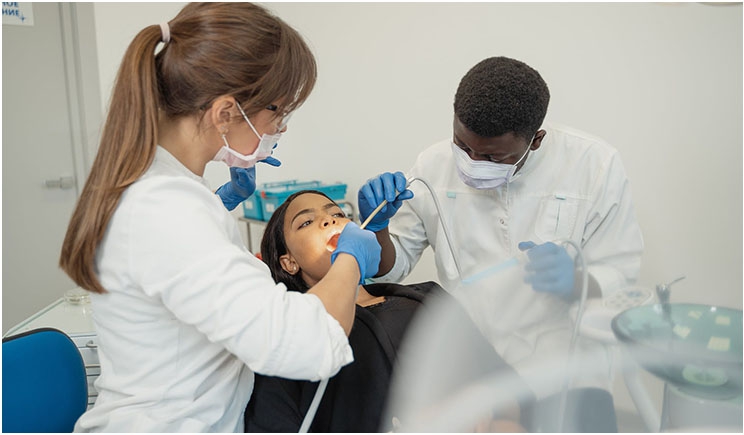
It comes as no surprise to anyone that the oral health profession continues to lack diversity. According to the American Dental Education Association, in 2016, only 15.2% of the applicants to dental school were from underrepresented populations.
Why does it matter?
For starters, everyone deserves to feel safe, comfortable, and heard. This happens when we focus on culturally appropriate care and outreach, person-centered care that accounts for individuals’ unique circumstances, greater access to services, and building effective patient-provider relationships.
We know more than 65 million Americans lack access to dental coverage as a result of socioeconomic factors and racial inequalities that persist throughout the country, and that was before the COVID-19 pandemic disrupted healthcare systems and resulted in millions of lost jobs.
Access is a problem, but it doesn’t end there. Consider that these patients and communities do not have providers who look like them or personally understand the unique issues they face. Without that baseline connection, even if they have dental coverage, patients may be less likely to get the oral care they need.
So as we tackle access and other systemic issues, addressing the lack of representation in the industry is critical.
Three key focus areas will help address opportunity gaps: education, inclusivity, and best practice research. We need a concerted effort that includes target investments to not only bring more people into the field, but also to help them succeed when they get there.
Investing in Education
Higher education is an important place to start. Racial and economic inequality puts people of color at a disadvantage in the pursuit of a career in dental care, in large part because there aren’t accessible resources to support higher education admissions or even exposure to the types of professions within dentistry.
That’s why DentaQuest is making significant investments in this area, including providing more than $150,000 in funds to help students gain real-life care experience at community clinics. The university externship program funds are split evenly among the Howard University College of Dentistry, the University of Texas Medical Branch (UTMB) Galveston, and the University of Washington Office of Educational Partnerships and Diversity.
These investments aim to reduce students’ financial burden associated with on-the-ground oral healthcare delivery experience community clinics, as well as to inspire young people to pursue health careers in the underrepresented communities these clinics serve.
Investing in Underrepresented Communities
Increasing access in academic settings and in the field helps those who are underrepresented in the industry. And access can mean an inclusive, safe space to explore dentistry as a profession. With a more diverse provider pool, we’re hopeful to see a more diverse patient population in the future.
But as history has shown, this kind of change doesn’t happen organically. We must support strategic investments and outreach among historically marginalized and underrepresented groups and make this a priority.
According to 2019 data, only five of the 6,200 first-time dental school enrollees in the United States identified as American Indian. That’s one reason why DentaQuest is supporting a new pilot program with the Society of American Indian Dentists to provide academic coaching, test preparation, and mentoring designed to encourage and help students who identify as American Indian enter into and excel within the dental profession.
Efforts to give students from underrepresented communities an equitable chance at dental school admission and professional success are critical. If we want to bring more diverse communities into the profession, we need to first unlock the door.
Investing in Research and Best Practices
To ensure that these programs and investments are working, they must be paired with research and data so we can measure our successes and our failures and work together as an industry to move forward and do better.
How? With efforts like these DentaQuest-supported research projects at Meharry Medical College in Tennessee, Virginia Commonwealth University, and UTMB Galveston. Researchers will identify replicable ways to support Black, Latinx, and American Indian students’ academic success and subsequent success in community practice.
At UTMB, for example, researchers will test best practice models for interprofessional care delivery in underserved communities to increase opportunities for preventive interventions and exposure to diverse providers within these communities.
The COVID-19 pandemic has exposed long-standing inequities in our oral health system, which have hurt both patients and providers of color. We need to work to improve the system, to help change it, and we strongly believe programs like this that support students of color can help do just that.
This is just the beginning. We recognize that we can do much more. But I believe that with programs and research like this, we’re one step closer to a more inclusive profession and community.
Mr. Pollock is president and CEO of DentaQuest, the nation’s leading purpose-driven oral health organization with the mission to improve the oral health of all.
Related Articles
US Dental Schools See Little Progress in Enrolling Black Students
Minority Representation Lags in Dental Workforce
Native America Needs More Dentists











